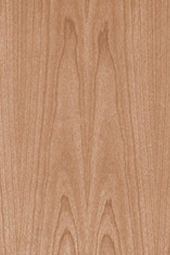One of the best things about natural timber veneer is the huge range of options available. Here at matilda veneer, we stock over 150 species. Each have their own unique characteristics and, depending on a range of factors, all have varying price points. Pricing, as well as colour, availability, and desired characteristics such as natural features and grain give cause to a specie’s popularity.
It is for this reason, one of Australia’s most used veneer species is American White Oak. For years, it has been favoured by architects and designers for its light- to mid-tones and excellent value-for-money. As a result, it has also been readily available and consistent in quality – a mainstay of the veneer landscape both here and around the world. Sadly, like many things, over the past two- and a-bit years the status quo has been significantly disrupted. With unprecedented demand for American White Oak, it was suddenly under supply pressure resulting in the price of the raw material increasing quickly. Coupled with huge increases in the cost of logistics and a depreciating Aussie Dollar, what was once excellent value is perhaps no longer such an attractive proposition.
While there is no evidence of a trend away from American White Oak, it does open the door for several other imported species which can offer similar tones at comparable, or lower, prices. So rather than simply specifying and using White Oak as the ‘set and forget’, architects and designers now have reason to revisit their specification and create projects which are more innovative, unique and fresh – and just as importantly, excellent value for money.
Here’s five alternate species you might want to (re)consider:
- White Ash encompasses both the North American (F. americana) and European (F. excelsior) versions. The veneers exhibit a light-coloured appearance and feature prominent crowns (also available as quarter) making it suitable for wall linings, joinery and furniture.
- American Red Oak is often overlooked in preference of White Oak but is beautiful in its own right. With a similar grain structure and a tendency towards pink, red and brown tones, Red Oak offers some subtle differences which can give projects a more bespoke appearance when compared to the often over used White Oak varieties. This species offers considerable savings in applications where White Oak is being painted or stained.
- American Maple (also know as Rock Maple or Hard Maple) is cold climate tree that grows across the north-east States of the USA and in Canada. In addition to maple syrup, the species produces attractive light coloured veneers, sometimes with a pink tinge. It is a much-loved traditional North American veneer worthy of consideration.
- Hickory, while less prevalent in Australia, has untapped potential. Its heartwood is typically beige to light brown, with contrasting lighter sapwood. The sapwood, which in most species is guillotined off, can be left in to create a unique architectural feature known as calico, which can produce uniquely stunning results. Alternatively, without the sap, the heartwood makes consistent soft toned panels with pronounced grain to rival White Oak.
- Rotary-cut Birch veneers have long been used in the production of decorative plywood, but the availability of this species as sliced, mainly as crown-cut, gives rise to more design options worthy of consideration.
Click here to see the full blog as a pdf download with images.
If you’d like to discuss your veneer selection, please give us a call or email us at hello@matildaveneer.com.au



